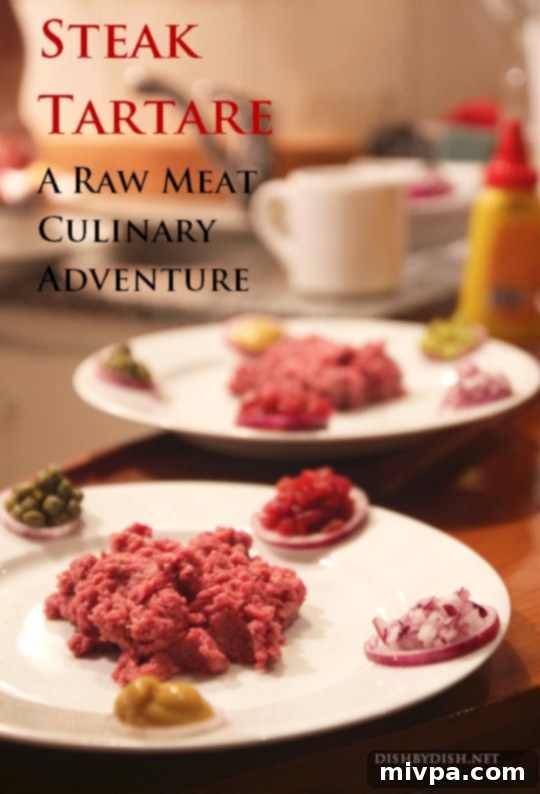From Skepticism to Savor: Our First Steak Tartare Experience in Buenos Aires, Argentina (Full Recipe Included)
Juan and I recently embarked on one of the most exotic culinary adventures of our lives, right here in the vibrant city of Buenos Aires. It was an evening that challenged our preconceptions about food, broadened our palates, and left us with a truly unforgettable taste.
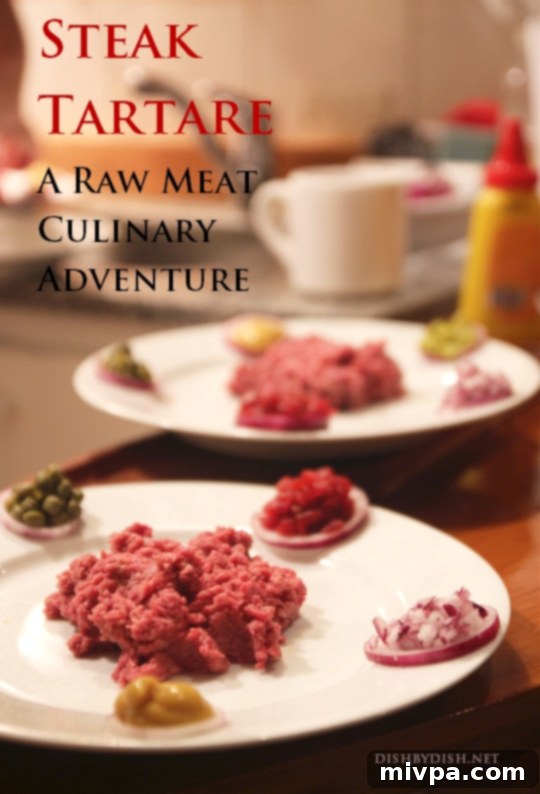
A Serendipitous Meeting in Buenos Aires
Our journey into the world of Steak Tartare began about a month ago when we connected with Wiwienne and Michal, a delightful couple from the Czech Republic. They were friends of our mutual acquaintance, Rob, and had exciting plans to move to Buenos Aires from Sydney. We were thrilled at the prospect of meeting them; making new friends, especially fellow expatriates in this incredible city, is always a welcome joy. We love sharing our adopted home and its unique culture with newcomers.
Our initial meeting was over a fantastic meal at Don Julio, a renowned parrilla (steakhouse) nestled in the upscale Palermo neighborhood. The conversation flowed effortlessly, and we quickly found a wonderful connection. Following this successful first encounter, we arranged to meet again the next weekend for a more active outing: rollerblading through the beautiful Palermo Woods. After an invigorating hour of gliding under the warm, golden autumn sunshine, we settled down for a leisurely lunch at another charming parrilla in Palermo, where we indulged in hearty food and engaging conversation.
The Revelation of Steak Tartare
Amidst discussions about life in Buenos Aires and the undeniable excellence of Argentine beef, Wiwienne posed an intriguing question: why, in a country celebrated globally for its magnificent beef, was Steak Tartare conspicuously absent from restaurant menus? Juan and I were stumped. It was, surprisingly, the first time either of us had ever heard of the dish.
Wiwienne and Michal, with a clear passion for the dish, eagerly explained its essence. Steak Tartare, they clarified, is primarily composed of finely chopped or minced raw beef, though historically, horse meat was also used. It’s typically seasoned and served with an array of accompaniments such as onions, capers, various spices, and often crowned with a fresh, raw egg yolk. It’s frequently enjoyed atop rye bread or toast. They shared its fascinating history, noting the legend that the dish is named after the Tatar people of Central Asia, who were said to consume raw meat as they rode their horses. However, it was in France that the dish truly gained fame, evolving into its refined form where the meat is marinated in wine and spices before being chilled and served with elegant precision.
An Invitation, and Our Hesitation
No sooner had they finished their detailed explanation than Wiwienne and Michal extended a spontaneous invitation to their new loft for a dinner featuring homemade Steak Tartare (the beef version, of course). Juan and I exchanged glances, a mix of curiosity and apprehension swirling between us. How enthusiastic should we truly be about consuming something so inherently raw?
Now, to be clear, I’ve always considered myself an adventurous eater. Having been exposed to diverse cultures and cuisines from a young age, I usually embrace new culinary experiences with open arms. But raw beef, especially when paired with raw egg yolks, sounded like an entirely different league of “exotic.” It pushed the boundaries of my comfort zone further than any dish before.
Despite these initial doubts and the genuine apprehension about eating raw meat – a concept that sounds incredibly primordial and carnivorous to many – I found myself surprisingly psyched for the dinner. It had been a long time since we’d felt such a thrill of anticipation for something truly extraordinary, completely novel, and which even stirred a slight flutter of fear in our hearts (and stomachs). Juan, ever the cautious one, seemed to lean more towards the “fear” side of the equation, while my enthusiasm steadily grew. We accepted their invitation, and as Saturday night drew nearer, our excitement mounted, fueled by a blend of eagerness and nervous curiosity.
The Evening Unfolds: Ambiance and Appetizers
We arrived at their beautiful apartment promptly at 7:30 PM. By Argentine standards, this was early for dinner, but it was perfect timing to witness the Steak Tartare preparation firsthand. We were greeted by the warm glow of candlelight illuminating their dining table, already set with an inviting entree and elegant glasses of vibrant red Malbec wine. The atmosphere was immediately welcoming and sophisticated, setting the stage for what promised to be a memorable evening.
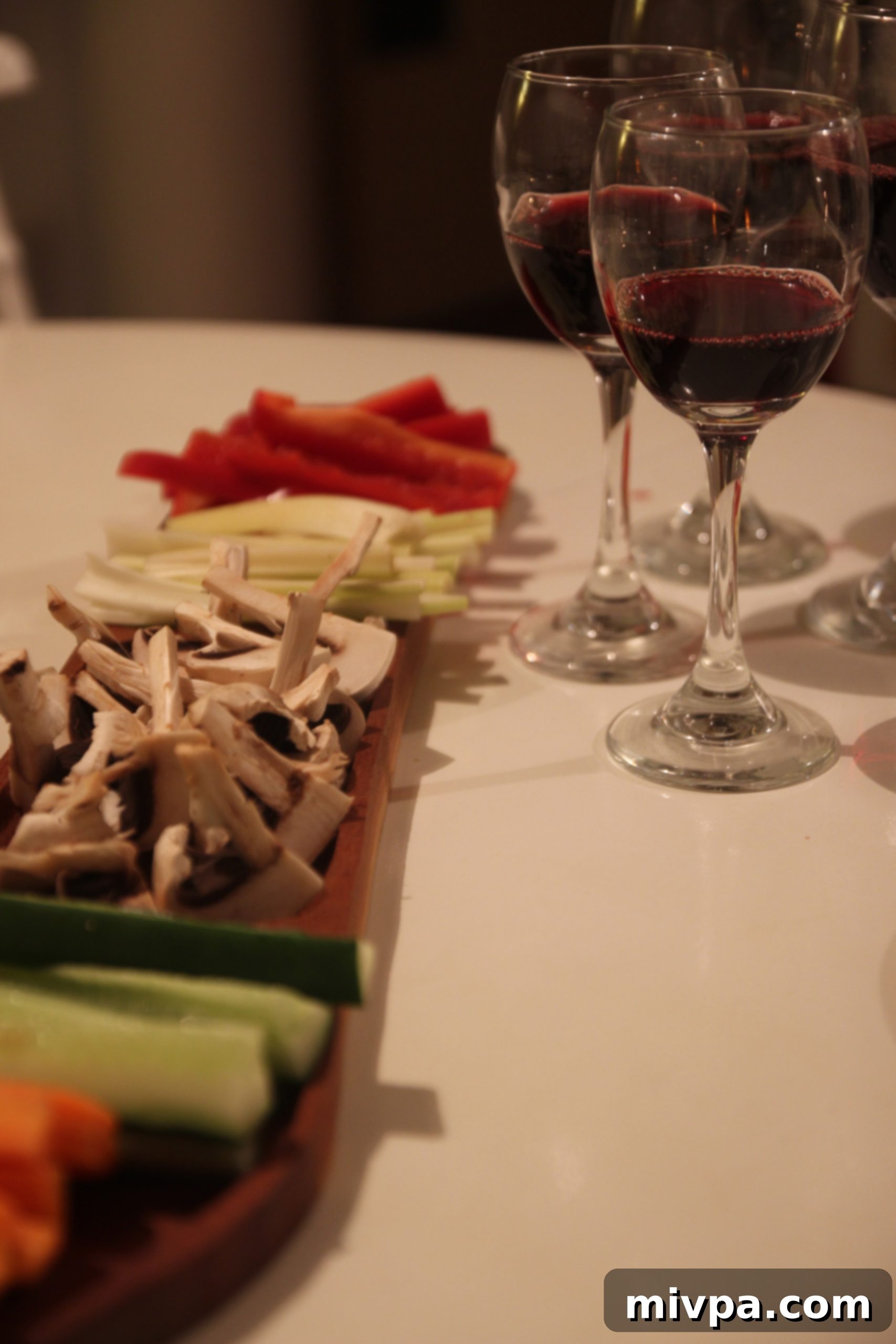
The starter was a delightful assortment of freshly sliced vegetables – crisp carrots, refreshing cucumber, earthy mushrooms, crunchy celery, and sweet red bell peppers. These vibrant crudités were paired with an absolutely divine garlic cream. This wasn’t just any dip; it was a masterful concoction of rich cream cheese expertly blended with a touch of milk and generous amounts of finely chopped garlic. Snacking on these delicious appetizers and savoring the exquisite garlic cream, all while sipping on the beautiful Malbec, we soon settled into a comfortable mood, our initial apprehensions beginning to melt away as Wiwienne and Michal gracefully began preparations for our much-anticipated main course.
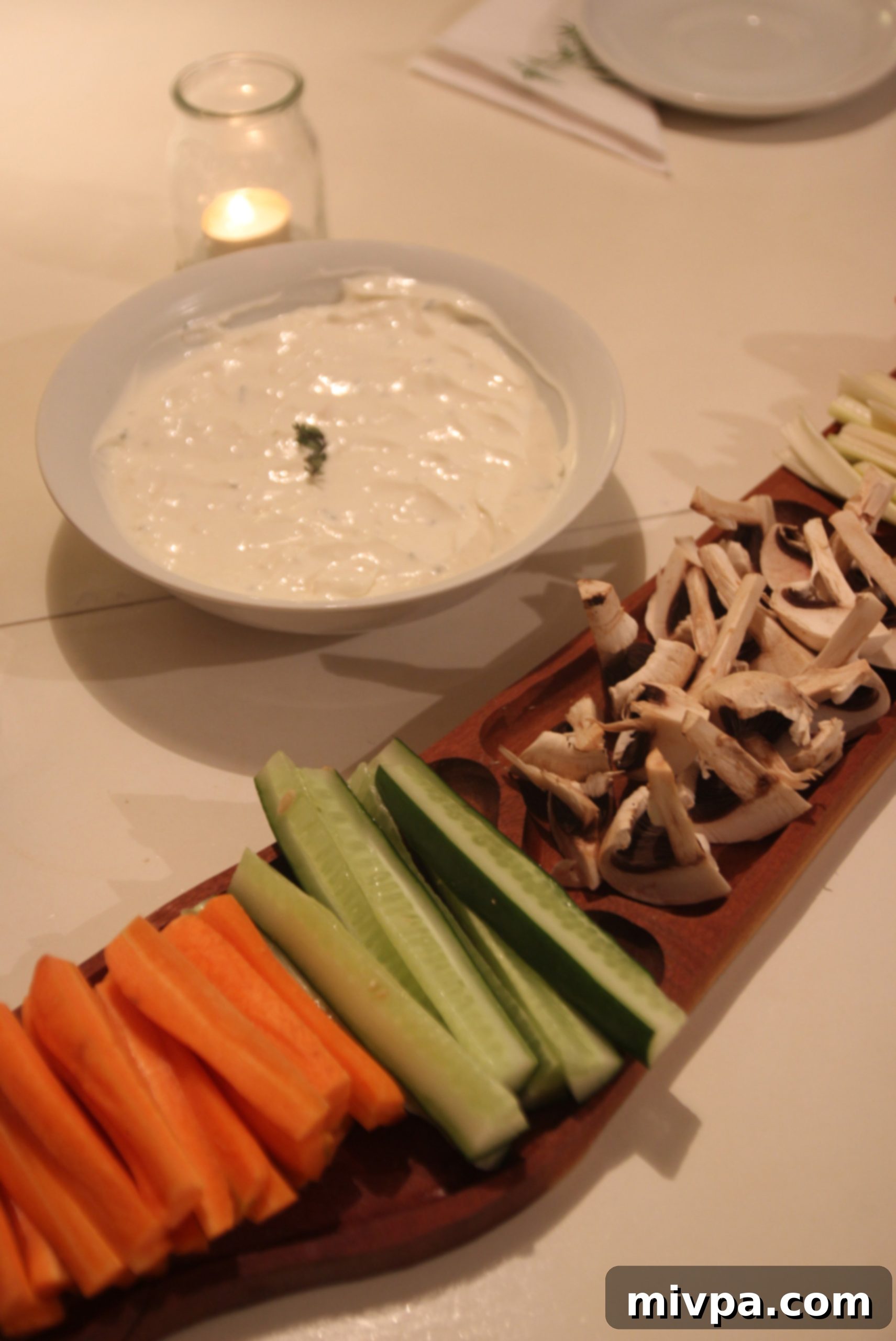
The Art of Preparation: Crafting Steak Tartare
Our hosts had spent the afternoon meticulously grocery shopping, ensuring only the freshest, highest-quality ingredients. The star of the show, of course, was beef tenderloin. They carefully selected just the right amount – approximately 150 grams per person – and ensured all visible fats were meticulously stripped away, leaving only pure, lean meat. This attention to detail spoke volumes about their dedication to the dish.
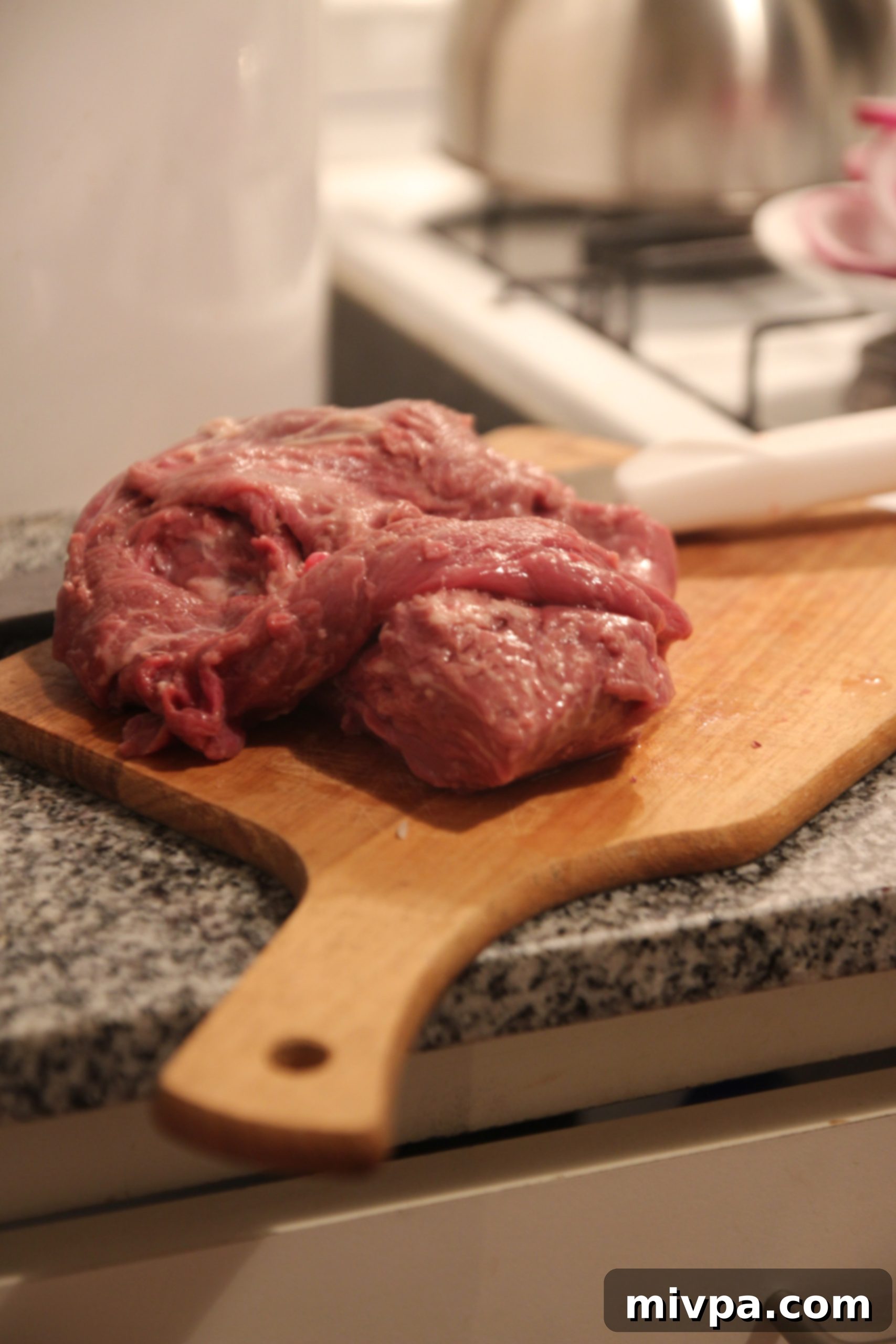
Michal, standing impressively at about 1.90 meters tall, took the lead in preparing the beef. He first gave the tenderloin a careful wash – a precautionary step against any external contaminants. Then, with the precision of a seasoned chef, he wielded their super-sharp, brand-new kitchen knife. He began the intricate process of shredding the meat into delicate, thin red threads, showcasing remarkable control and skill. Following the shredding, he chopped the meat with an impressive force and rhythm, reducing the threads into incredibly small, uniform pieces. His height and strength seemed to give him an advantage in this demanding task, turning the preparation into a mesmerizing culinary performance.
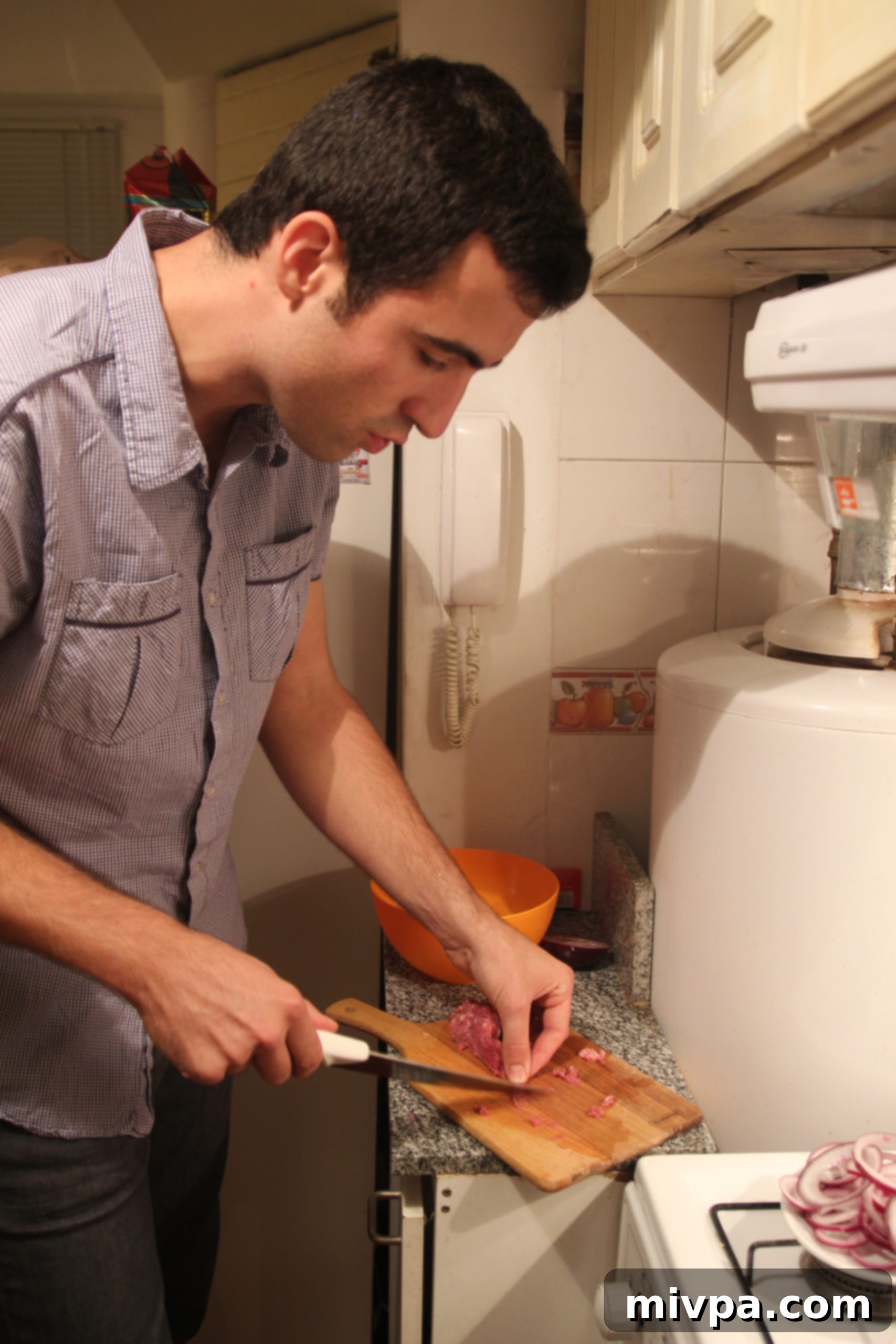

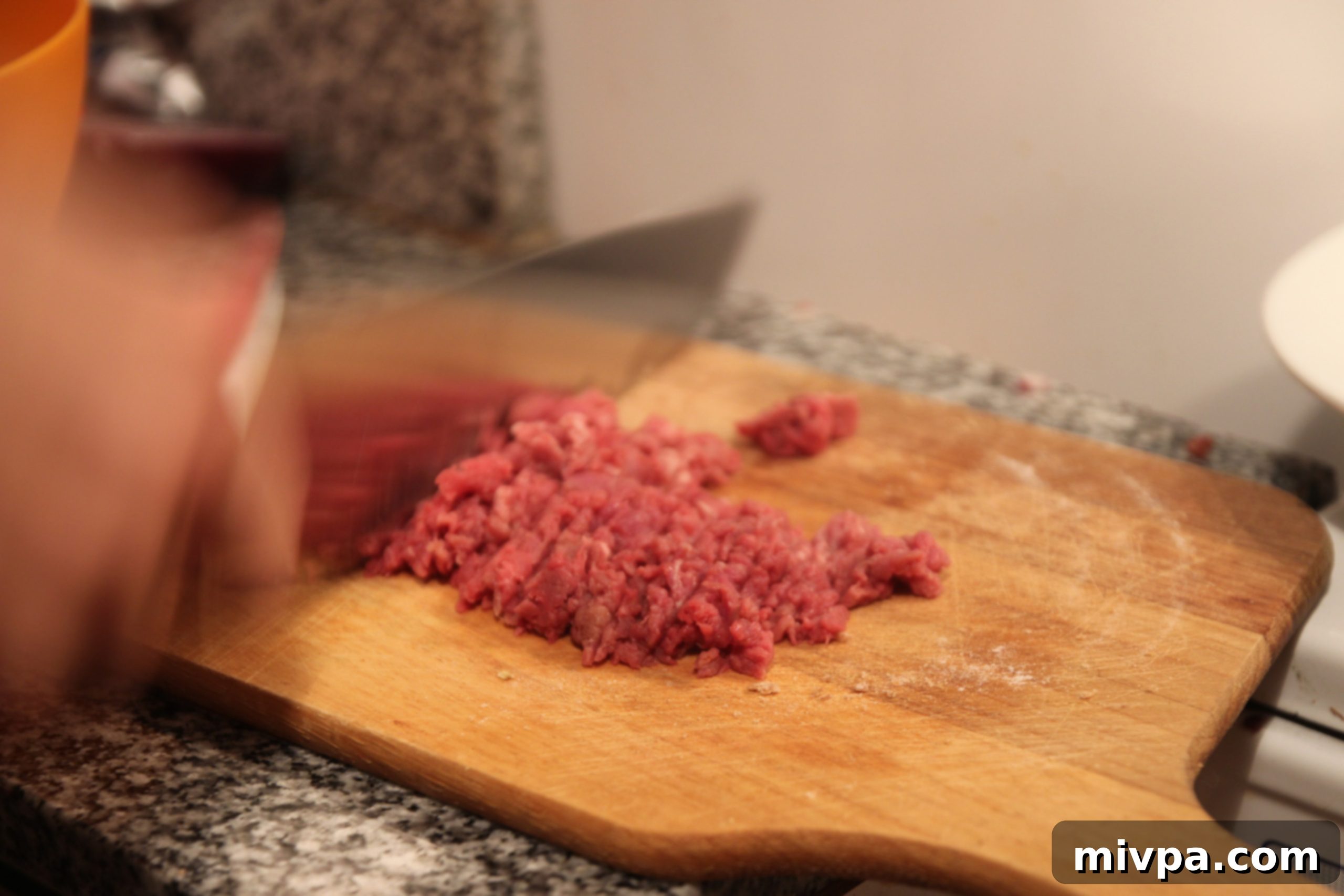
With the beef perfectly prepared, attention turned to the accompanying ingredients. Michal meticulously sliced red onions into delicate rings. These rings weren’t just for flavor; they were destined to become part of the dish’s beautiful presentation, serving as decorative edible borders to hold the other components in place on the plate.
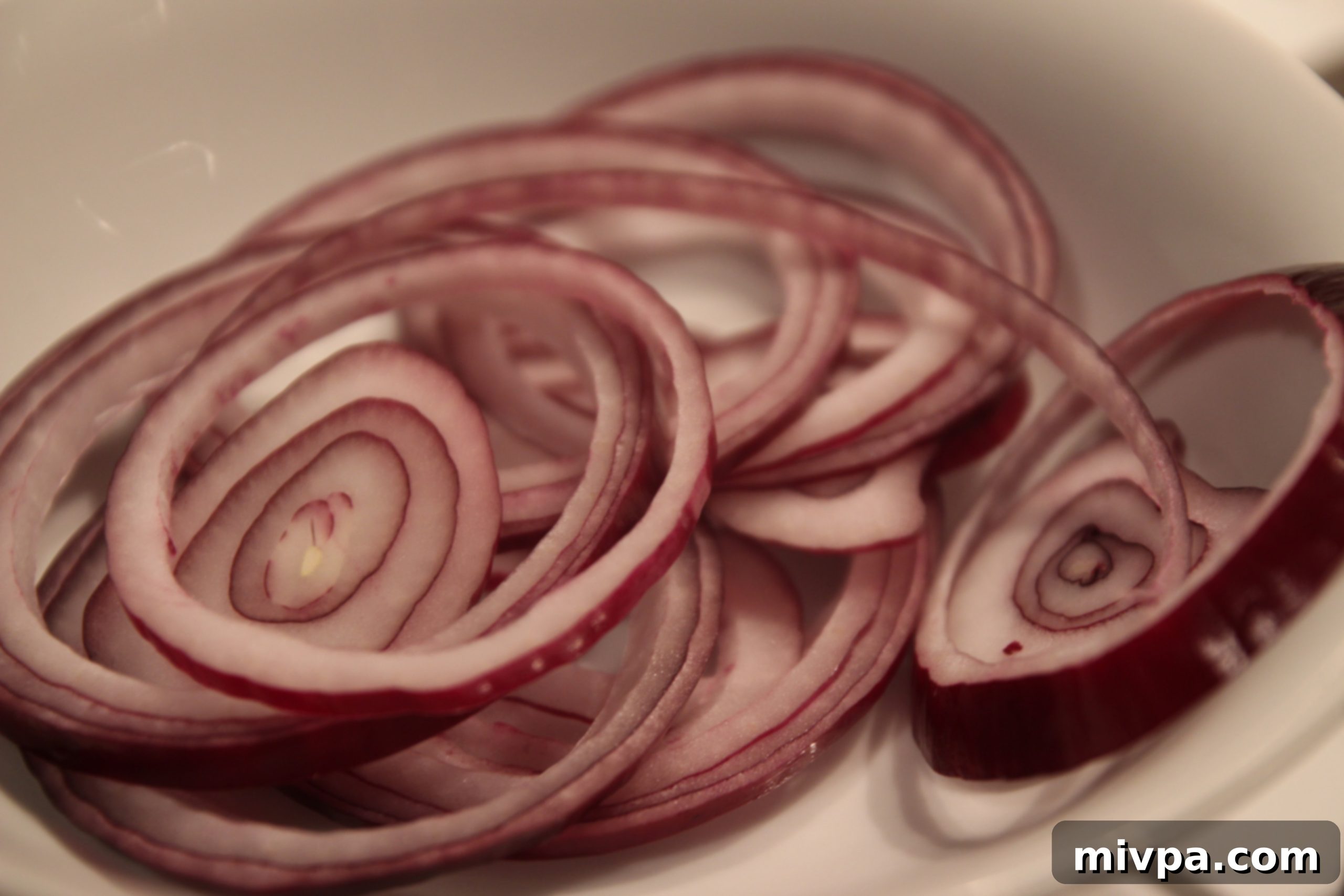
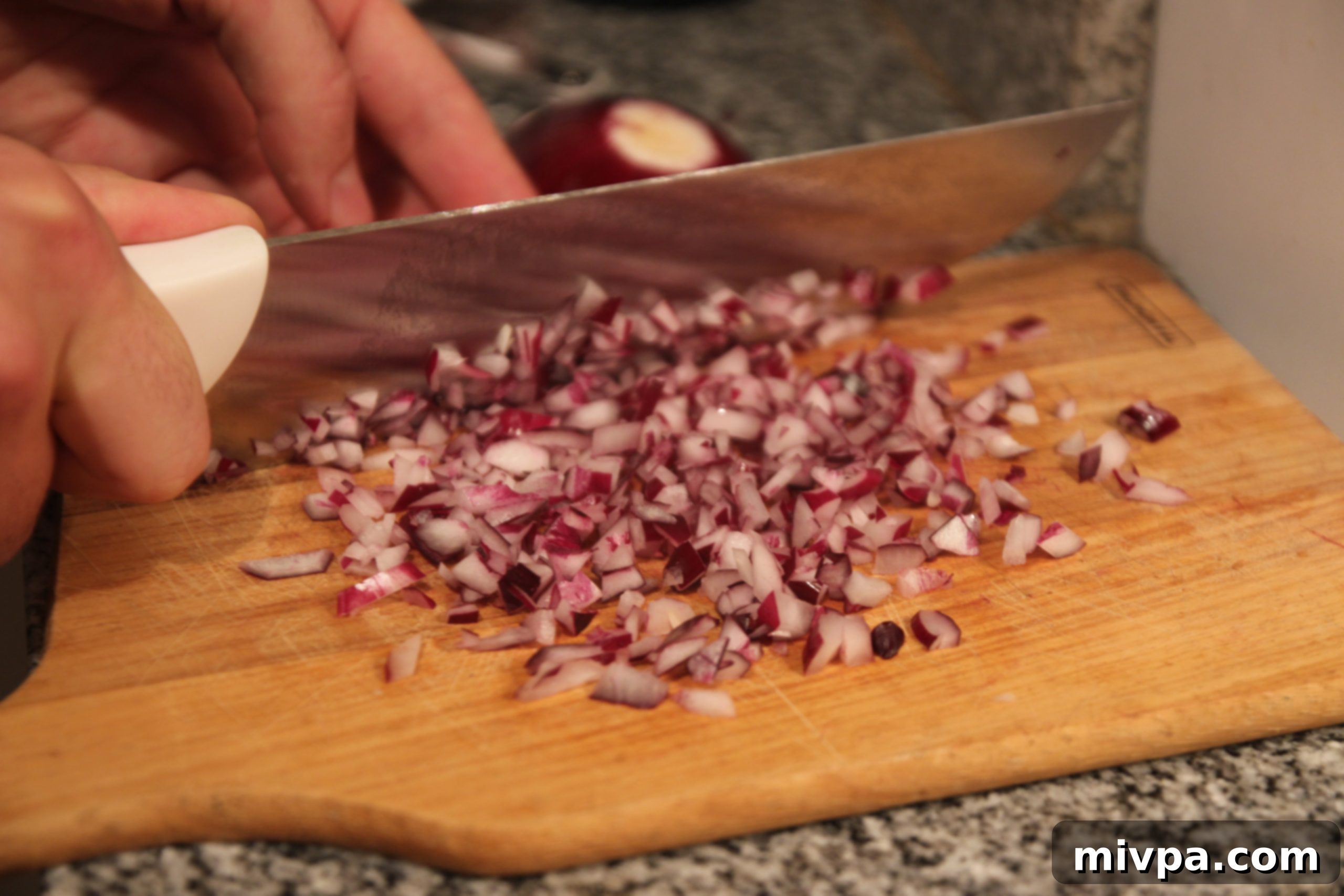
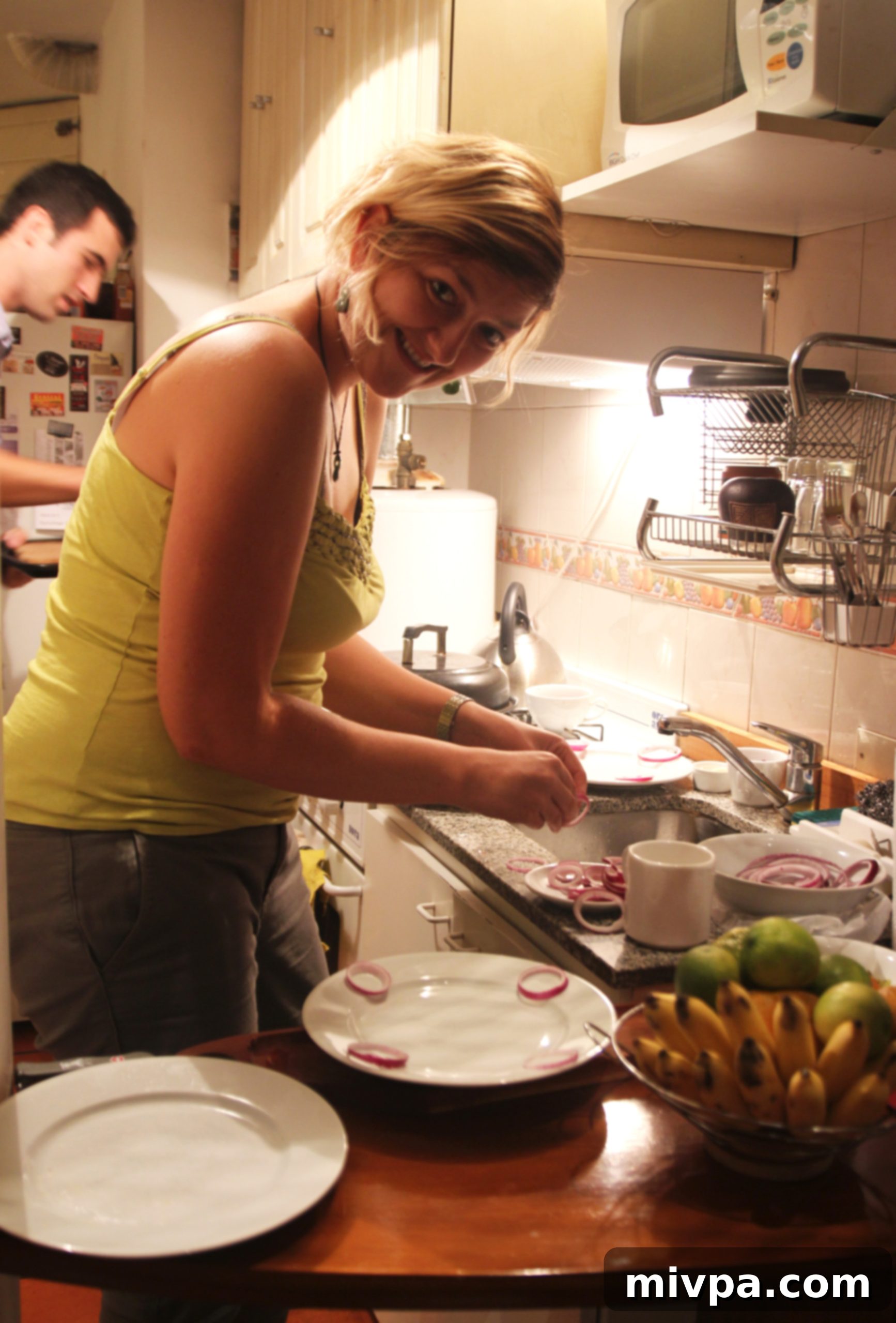
According to their authentic Swedish recipe, the other essential ingredients included yellow mustard, additional finely diced red onions, tangy capers, sweet beetroot, and crunchy pickles. Each of these components was meticulously diced to perfection, ensuring a harmonious texture in every bite. With all ingredients prepared, Wiwienne and Michal began their artistic plating. They arranged the diced ingredients within the onion rings, forming an inviting external circle on each plate. Then, they carefully molded the finely chopped beef into a perfect mound in the center, creating a small, intentional crater at the top. This small depression was reserved for the grand finale: the placement of a pristine, raw egg yolk, nestled delicately atop the meat.

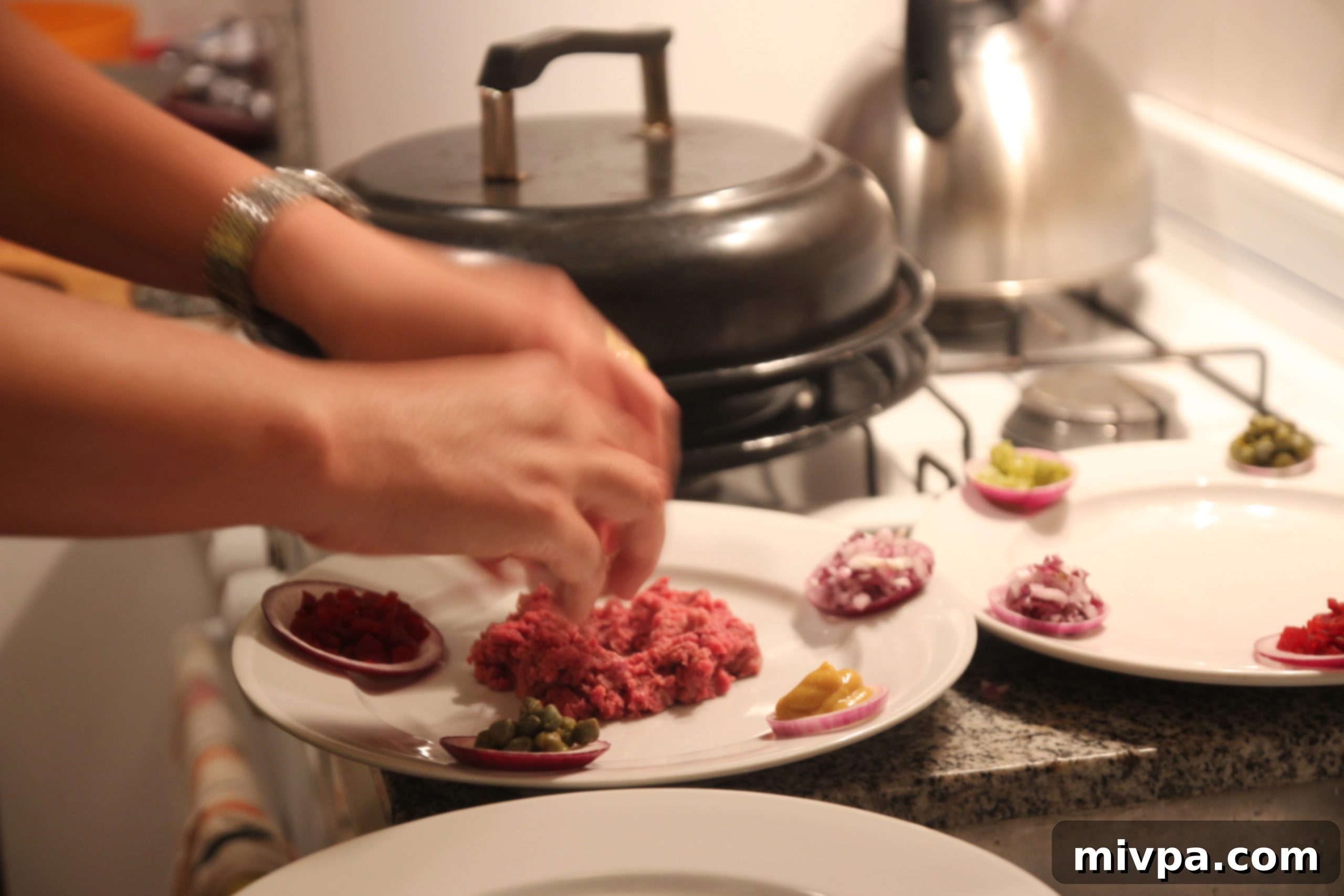
A True Culinary Masterpiece
It was, truly, a magnificent sight to behold. The vibrant colors of the beetroot, the crisp white of the onions, the deep red of the beef, and the luminous yellow of the egg yolk all combined to create a stunning visual symphony. It wasn’t just food; it was art on a plate, meticulously crafted and invitingly presented.
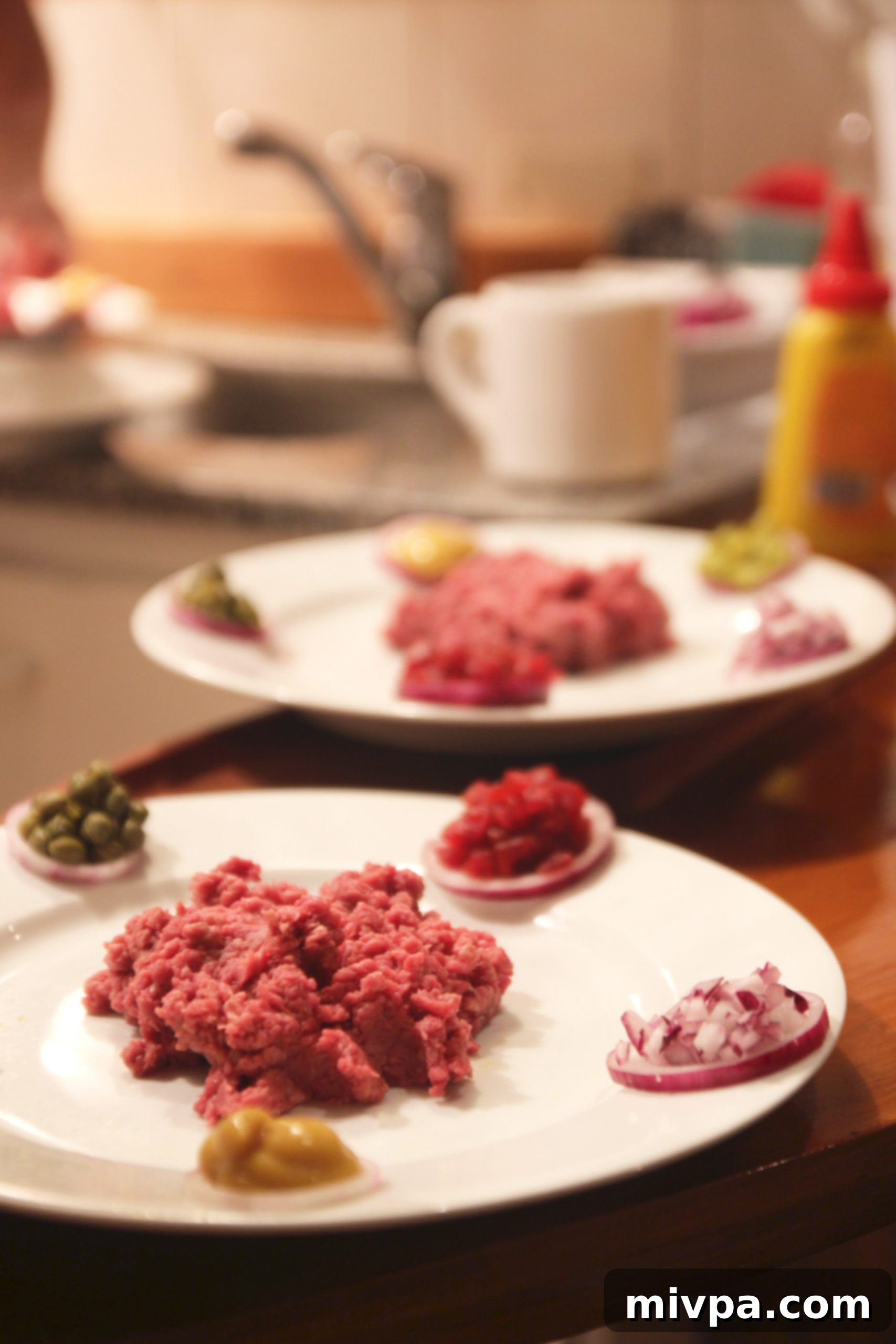
During the entire course of this impressive culinary display, I must confess a little secret: while I was utterly captivated, peering over Wiwienne and Michal’s shoulders like an eager culinary student, Juan was a different story. I suspect he was silently breaking out in cold sweats, attempting to maintain an air of composure, perhaps calming his internal fears with generous sips of Malbec – consumed on an otherwise empty stomach, no less!
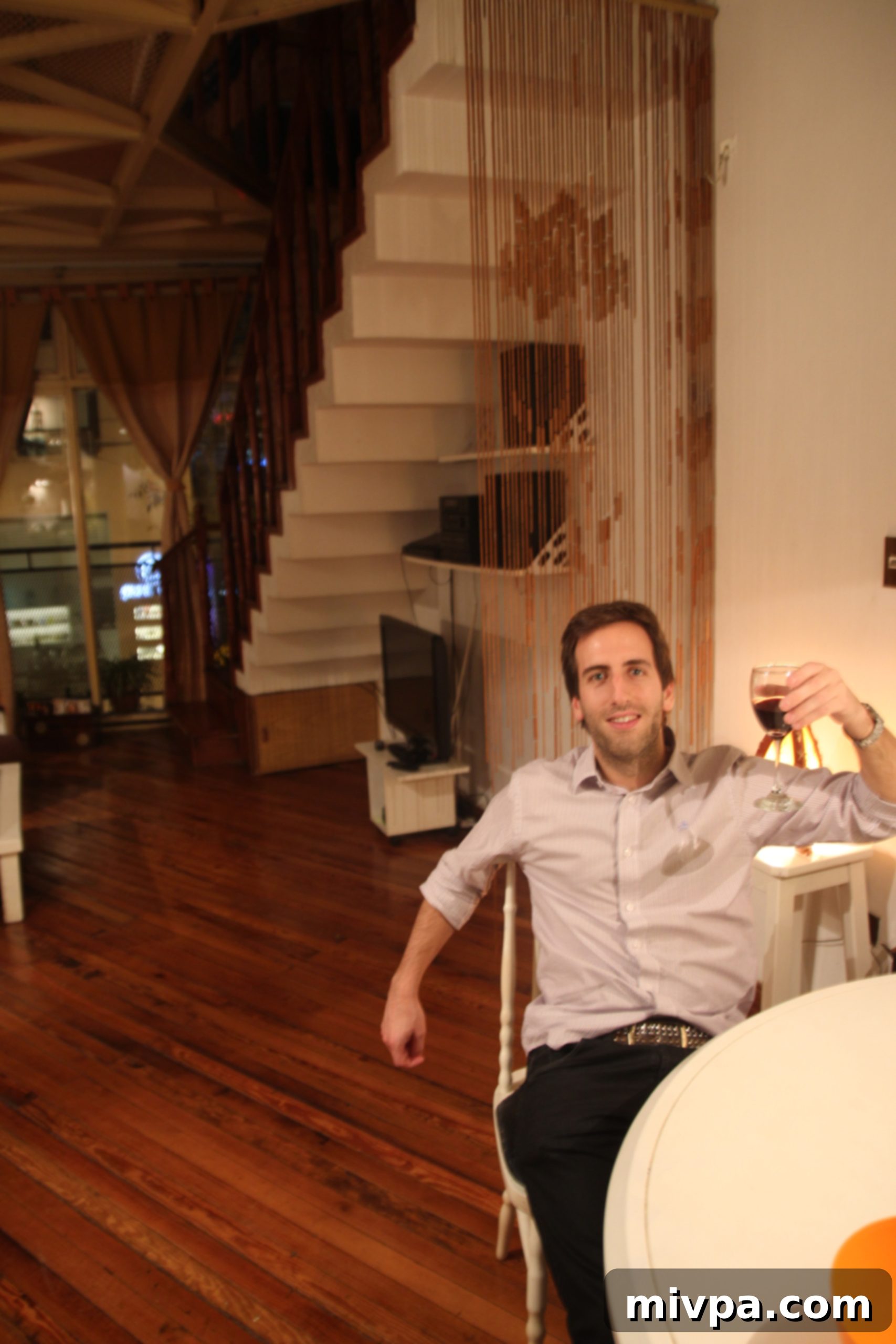
The Moment of Truth: Tasting Steak Tartare
The moment of consumption arrived. We were instructed to mix the raw beef with the glistening egg yolk and all the delightful garnishes, creating a rich, textured blend. This savory mixture was then to be spread over oven-toasted bread, which had been rubbed with fresh garlic cloves, adding another layer of aromatic complexity. This traditional method ensures that all the flavors meld together harmoniously in each bite.
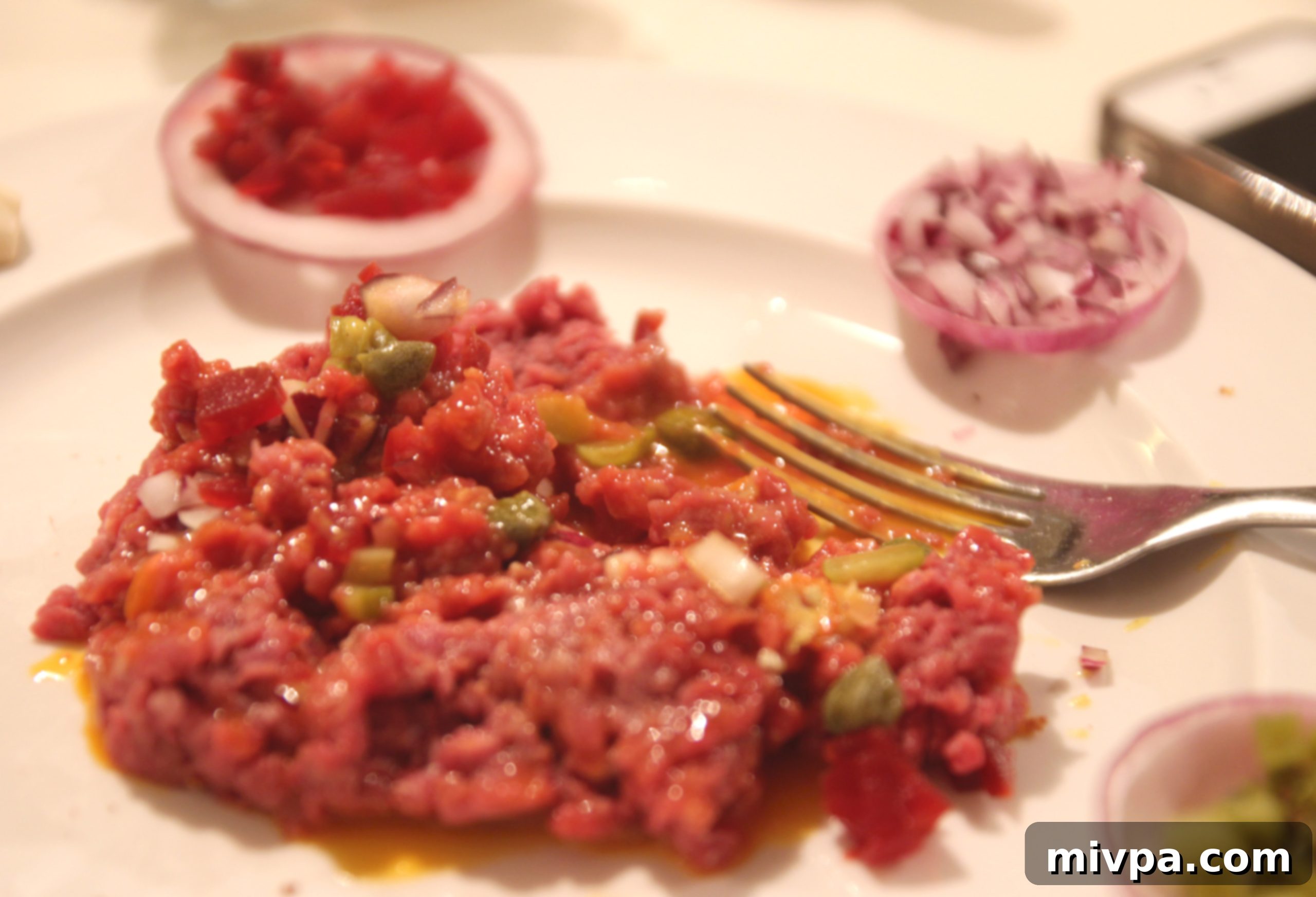
I have to be completely honest: eaten in this manner, spread generously over the warm, crisp, garlic-infused bread, the raw, finely chopped meat tasted profoundly better than either Juan or I had originally dared to anticipate. Our initial apprehensions quickly dissipated with the first bite, replaced by a surprising and genuine delight.
The texture was wonderfully unique – creamy and rich, almost like a delicate pâté, yet with the satisfying bite of perfectly minced raw tuna. This foundational texture was beautifully intertwined with the crunchy bursts of fresh red onion, the subtle sweetness offered by the maroon beetroots, and the invigorating spice and tang from the sour pickled cucumbers and vinegared capers. Each ingredient contributed its distinct character, creating a complex yet balanced flavor profile that danced on the palate.
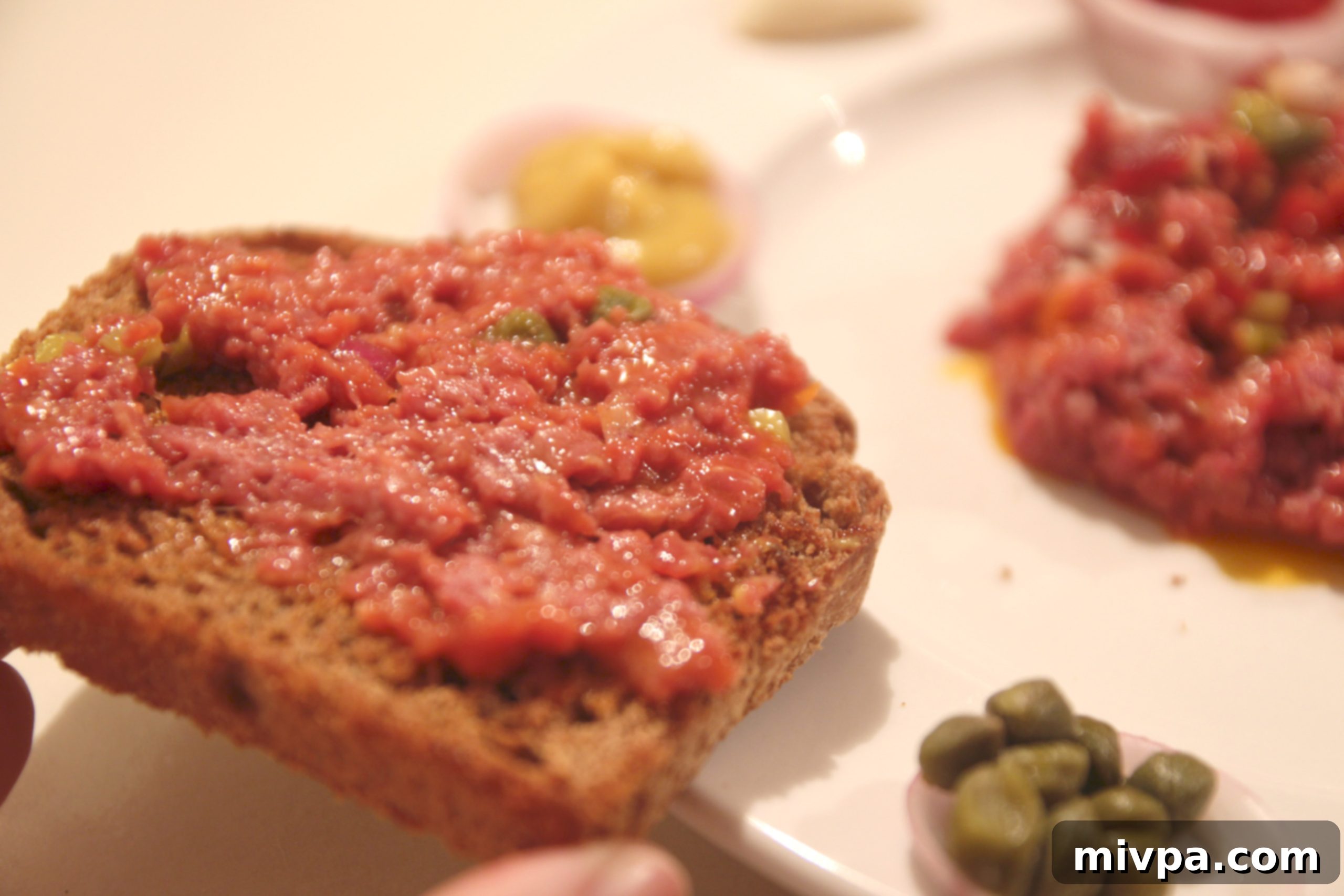
Trust me, it was truly, remarkably good. If you’re still skeptical, you simply have to try it to believe it. Our culinary world was not just opened; it was dramatically expanded. A heartfelt thank you to Wiwienne and Michal for this incredible and unforgettable experience, for their hospitality, and for introducing us to the exquisite pleasure of perfectly prepared Steak Tartare!
Authentic Steak Tartare Recipe (Czech/Swedish Inspired)
Inspired by our delightful evening, we’re thrilled to share this adapted recipe from Wiwienne and Michal, so you can recreate this exotic culinary experience in your own home. This recipe serves 4 hungry people.
Ingredients:
- 600g of high-quality beef tenderloin (approximately 150g per person), ensure all fats are removed, then shredded and chopped by hand to as small pieces as possible.
- 4 fresh egg yolks (ensure they are whole and unbroken).
- 4 large red onions: use a portion to form about 20 decorative rings, and dice the remaining to yield approximately 1/2 cup of finely diced onions.
- 1/2 cup of finely diced pickles (gherkins work well).
- 1/2 cup of capers, drained.
- 1/2 cup of finely diced cooked beetroot.
- 4 tablespoons of yellow mustard (Dijon or a good quality classic yellow mustard).
- 16 slices of whole wheat bread (or rye bread for a more traditional touch).
- 4 garlic cloves, peeled.
- Olive oil (for toasting bread).
- Salt and freshly ground black pepper to taste.
Preparation Steps:
- Prepare the Beef: Begin by thoroughly washing the beef tenderloin to ensure cleanliness. Carefully remove any remaining fats or sinews. Using a very sharp knife, first thinly slice the beef, then shred it, and finally chop it by hand into the smallest possible pieces. The finer the chop, the better the texture of your tartare. Place the prepared beef in a chilled bowl.
- Prepare the Onions and Garnishes: Slice a portion of the red onions into thin rings, aiming for about 5 rings per plate for decoration. Finely dice the remaining red onions, pickles, and beetroot. Set these aside in separate small bowls.
- Arrange the Plates: On each of four individual serving plates, artfully arrange 5 onion rings along the circumference, creating an inviting external border.
- Fill the Rings: Within the compartments formed by the onion rings, carefully place small, distinct portions of the diced pickles, diced onions, capers, beetroot, and a dollop of yellow mustard. This creates a colorful and organized presentation.
- Form the Beef Mound: Divide the finely chopped beef into four equal portions. Gently form each portion into a compact circular mound in the very center of each plate, within the border of garnishes.
- Add the Egg Yolk: Using a spoon, create a small, shallow crater or indentation in the top center of each beef mound. Carefully place one whole, unbroken egg yolk into this crater.
- Prepare the Toast: Lightly brush both sides of the whole wheat bread slices with a little olive oil. Toast them in an oven preheated to a moderate temperature (around 180°C or 350°F) until they are golden brown and crisp.
- Garlic Rub: As soon as the bread slices are toasted and still warm, take the peeled raw garlic cloves and rub them generously over the surface of each piece of toast. This infuses the bread with a wonderful aromatic garlic flavor.
- Serve and Enjoy: Present the beautifully arranged Steak Tartare plates immediately with the warm garlic toast on the side. Instruct your guests to gently mix the beef, egg yolk, and all the surrounding ingredients together on their plate. Add salt and freshly ground black pepper to taste. Spread the mixed meat concoction generously over the toasted garlic bread and savor this extraordinary culinary delight!
